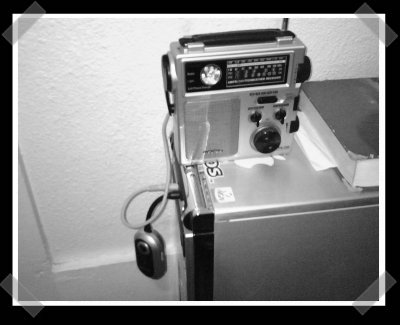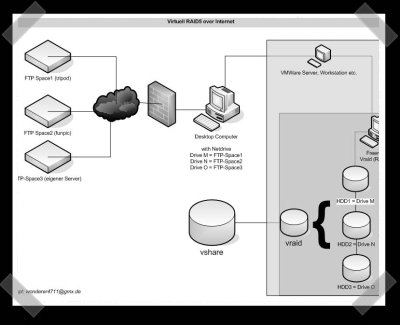
[wonder] sent in an interesting proof of concept how-to on setting up a virtual raid 5 drive that uses free ftp servers to store data. The technique is a bit round-about, but he says it works pretty decently. The shares are mounted under windows with netdrive, then raided by FreeNAS under VMware. I haven’t tried it myself, but I’d probably try to do the same thing, but use LUFS and do everything under one operating system.
computer hacks1402 Articles
computer hacks
Wiimote Head Tracking Desktop VR Display
[youtube=http://www.youtube.com/watch?v=Jd3-eiid-Uw&rel=1]
If you thought [Johnny Lee] was done making us all buy Wiimotes, you were wrong. Now he’s back showing off a simple, but incredibly effective VR head tracker. He swapped out the LED’s on a pair of LED light safety glasses with a set of IR LEDs and used his PC/Wiimote combo to do the work. The demo is just fantastic. As usual, you can download the software from his project page.
IPod Transmitter Radio Modem
[Eric] sent in his iPod transmitter radio modem hack (Internet Archive). Given the short range of these FM modulators (and FCC rules) I’d call this an academic exercise. Combined with a few mods, it could be useful for bursting data from a micro-controller. (Think APRS)
Asus EeePC Bonus:About a week ago, [johnx] added (Internet Archive) a 16GB flash drive and a bluetooth adapter to his. Yesterday, [ta2cba] showed off how he squeezed (Internet Archive) a four port hub inside his – allowing a pair of devices to live in the extra min-ipcie bay and leave two ports to spare for later add-ons.
Silence Your Mouse: No Clicky.
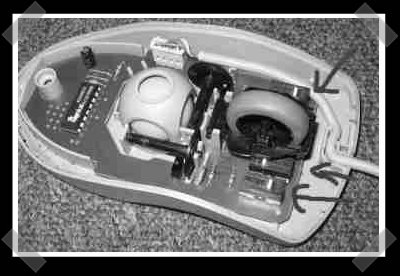
[PaulJ] sent in this older, but excellent little hack to silence your mouse. Don’t like the click that your mouse makes? If your mouse has the right kind of switch inside, it can be quieted down with a quick soldering job. Just remove it, turn the upper half around and re-assemble.
Spread Spectrum Freq Hopping USB RF Modem
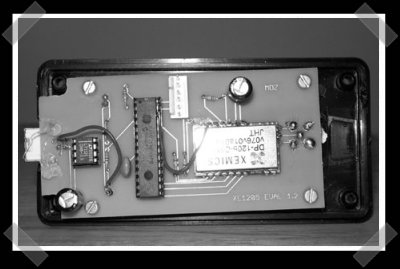
Since I mentioned Sparkfun electronics in the parts finding how-to, I started poking around their forums and stumbled across this interesting USB RF modem. It uses an off the shelf Semtec DP1205 RF module that’s controlled by a PIC 18F2550. The really interesting thing is that it uses spread spectrum frequency hopping – which means that by FCC rules, it can transmit up to 1 watt at 900Mhz.
Blowable Computer Interface
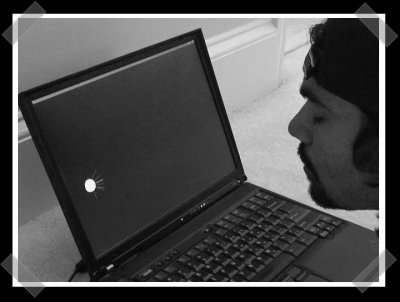
Remember Christopher Reeve’s blow controlled wheel chair? [Shwetak] sent in his blowable computer interface. It doesn’t require anything but an on-board microphone and a decent set of lungs. It works by taking audio fingerprints to determine the location on the screen that you’re exhaling on. The demo video (avi) shows off some surprisingly accurate location detection. You can get a few more details from his research paper. (If you need a decent avi video player, check out VLC player.)
Laser Camera Tracking
![]()
[ashish] is still having fun with his lasers. His latest hack is a dual laser based tracking camera. He mounted his camera to a simple parallel port controlled stepper motor. Essentially, if the camera loses track of either laser, it tracks to locate the lost edge of the object. I’d probably go with IR to reduce the chance of retina damage…

